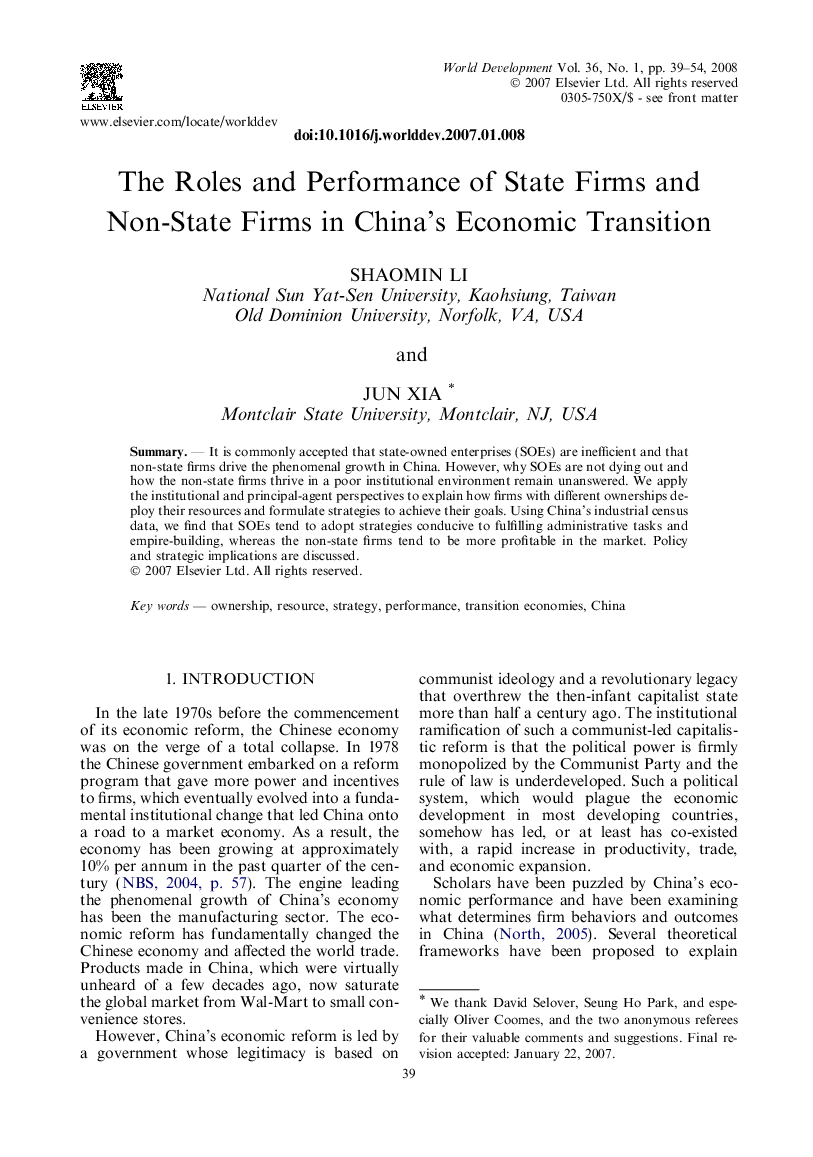| Article ID | Journal | Published Year | Pages | File Type |
|---|---|---|---|---|
| 989565 | World Development | 2008 | 16 Pages |
Abstract
SummaryIt is commonly accepted that state-owned enterprises (SOEs) are inefficient and that non-state firms drive the phenomenal growth in China. However, why SOEs are not dying out and how the non-state firms thrive in a poor institutional environment remain unanswered. We apply the institutional and principal-agent perspectives to explain how firms with different ownerships deploy their resources and formulate strategies to achieve their goals. Using China’s industrial census data, we find that SOEs tend to adopt strategies conducive to fulfilling administrative tasks and empire-building, whereas the non-state firms tend to be more profitable in the market. Policy and strategic implications are discussed.
Related Topics
Social Sciences and Humanities
Economics, Econometrics and Finance
Economics and Econometrics
Authors
Shaomin Li, Jun Xia,
